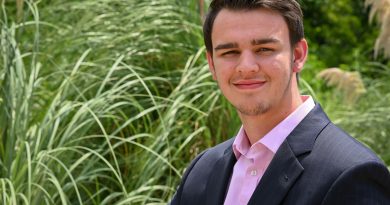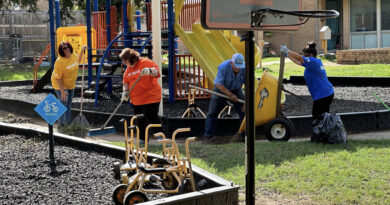Villa Lu Necia: A dream home steeped in local history
By Janna Zepp | Photos by Skeebo
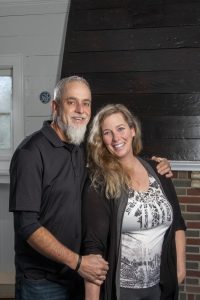
Louis Armstrong slept here. So did Ella Fitzgerald, Duke Ellington and other famous African American celebrities of the early 20th Century. Rumor has it that even famous Major League Baseball player Jackie Robinson was a guest, and that parties of Great Gatsby proportions happened whenever an entertainer was in residence.
Villa Lu Necia, located on the corner of Avenue F and South Pearl Street in Belton, was a hospitable place to stay during an inhospitable time for black Americans before the Civil Rights Movement. It was the dream home of a Central Texas educator and entrepreneur L.B. Kinchion Sr. and his wife, Necia Luline Gramlin Kinchion, for whom the house was named and built in 1926 at a cost of $16,000 (about $402,000 today).
Some 93 years later, Troy and Paula Finley bought Villa Lu Necia as their own dream home in 2019. Paula was born and raised in Scottsdale, Arizona. Troy moved to Arizona in 1990 from Amarillo to help his youngest brother attend architecture school. Troy met Paula and they moved to Lubbock in 1995. But life changes would move them again.
“Paula’s mother, June, was diagnosed with terminal cancer in 2014. God blessed us with the ability to relocate to Arizona and spend the last few years of June’s life with her,” Troy says. “We decided to get back to Texas in 2018.
 “Initially, we explored the Waco area, but it just did not feel like home. After visiting the Belton/Temple area, we knew this was where God was calling us to be. While searching for our forever home, we came across Villa Lu Necia on South Pearl Street in Belton. We absolutely fell in love on the first visit and made an offer that day,” Troy says.
“Initially, we explored the Waco area, but it just did not feel like home. After visiting the Belton/Temple area, we knew this was where God was calling us to be. While searching for our forever home, we came across Villa Lu Necia on South Pearl Street in Belton. We absolutely fell in love on the first visit and made an offer that day,” Troy says.
“I knew this was my house from the moment I saw it,” Paula says.
Soon after buying the house, the Finleys learned about the Kinchions.
“As we were beginning the renovation, we found boxes of photographs and books that belonged to the Kinchions. In some of those photos were Louis Armstrong and Ella Fitzgerald,” Paula said. “That’s when we realized the house was truly special.”
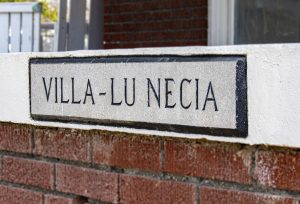 Kinchion was well known throughout Texas. The father of Rev. Roscoe C. Harrison Jr., pastor of the Eighth Street Baptist Church in Temple, lived in Belton next door to the Kinchions’ home on Pearl Street.
Kinchion was well known throughout Texas. The father of Rev. Roscoe C. Harrison Jr., pastor of the Eighth Street Baptist Church in Temple, lived in Belton next door to the Kinchions’ home on Pearl Street.
According to Harrison, Kinchion was the principal of the West Austin Colored Public School in 1900. He was a captain in Company C, Hawley Guards (Galveston), 1st Colored Battalion-Infantry of the Texas National Guard in 1905. He served as a teacher at the Gregory Colored School in Austin in 1906. He was an incorporator and also president of the Colored Teachers’ State Association of Texas in 1920. He is listed as Chancellor of the Capital City Lodge No. 56, Knights of Pythias fraternal organization from 1906 to 1907. He served as the Vice-Grand Chancellor of the Grand Lodge Colored Knights of Pythias, Jurisdiction of Texas in 1923, and later elected Grand Chancellor. He was present in 1930 with other members of the order when the cornerstone was laid for the historic Moorland YMCA in what is now the Arts District in Dallas. He was the principal at West Belton Colored High School which is now the Harris Community Center.
And while Kinchion was involved with all of that, he also made his fortune selling cosmetics and hair-straightening products.
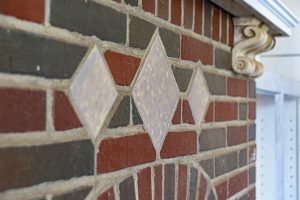 “South Pearl Street in Belton was where the well-to-do black families lived. It was the Black Silk Stocking District of its day,” Harrison says.
“South Pearl Street in Belton was where the well-to-do black families lived. It was the Black Silk Stocking District of its day,” Harrison says.
Jim Crow laws of the time, right up until the signing of the Civil Rights Act of 1964 prohibited blacks and whites to stay overnight in the same lodging at the same time, so the Kinchions opened their house as a tourist home to famous black entertainers traveling through Texas. It’s not known if Villa Lu Necia was among safe businesses and lodgings listed in The Negro Motorist Green Book, later known as The Negro Travelers’ Green Book or simply “The Green Book,” a state-by-state, city-by-city alphabetical listing of hotels, boarding houses, restaurants, beauty shops, barbershops and many other necessities of travel serving African-Americans.
About 9,500 safe places of business were listed in the Green Book from its beginnings in 1936 until it ceased publication in 1966. Now, only a third of the buildings that housed those businesses still stand. But Villa Lu Necia can be counted as one of those few remaining places that made all the difference to African American travelers’ survival in the mid-20th century.
Harrison also says L.B. Kinchion was instrumental in his parents meeting on a night back in 1934.
“Mr. Kinchion and other notable members of the black community had an elite social club called the Blue Moon Chasers Social Club. My mother and father met at one of the club’s dances. My parents courted about six months before they got married,” Harrison says.
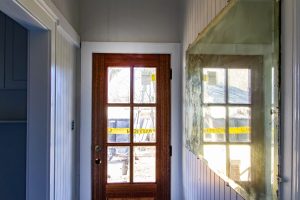 That piece of Belton history and the home’s place in it resonates with the Finleys, so much so that the remodeling and updating of the home is being done with an eye to what they think the Kinchions might have done themselves were they still alive. They’re doing it with the help of Gage Construction of Temple.
That piece of Belton history and the home’s place in it resonates with the Finleys, so much so that the remodeling and updating of the home is being done with an eye to what they think the Kinchions might have done themselves were they still alive. They’re doing it with the help of Gage Construction of Temple.
“We’ve repurposed a lot of existing items from the house, like the flooring, and used materials that looked like they might have come from the 1920s, like the front door, which is modern but period-correct,” contractor Tommy Gage says. “The Finleys wanted to stay true to the design of the house but with enough modern upgrades to make the home functional for the 21st century, so that’s what we did.”
“We’ve met our neighbors, and they’ve been helpful in learning about the Kinchion family because they knew them,” Paula says. “Barbara (Ligon) across the street from us grew up playing with Edna Kinchion when they were little girls, and her father planted the trees in our front yard for Mr. Kinchion.”
The Finleys hope to do more than just be neighbors. They have set up a 501(c)(3) nonprofit organization with which to help those in their new community.
“The Finley Foundation is a personally funded foundation with the sole purpose of helping those in need by supporting nonprofit organizations through volunteer work and financial grants,” Paula says.
“We are planning to launch our new company, Central Texas Rusto-Mods and have future plans for a couple of food trucks, with a percentage of profits going to help serve our community,” she says. “We want to give back. Like Mr. Kinchion, we want to honor his legacy and do more for our new neighborhood and its residents.”


